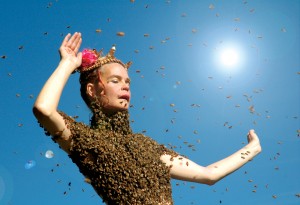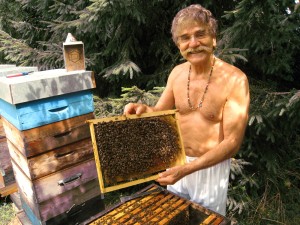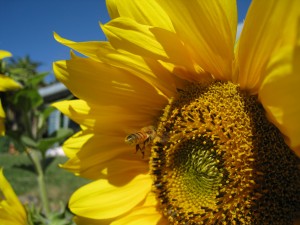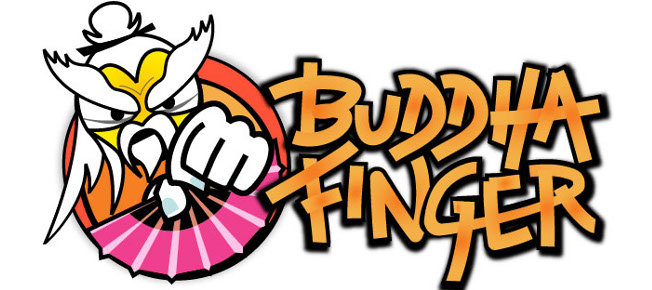In 2006, millions of honeybees in the United States mysteriously vanished. Referred to as colony collapse disorder, the phenomenon continues in the U.S. as well as in countries throughout Europe. In Queen of the Sun: What Are the Bees Telling Us?, director Taggart Siegel (The Real Dirt on Farmer John) continues his exploration into the unique relationships between people, agricultural livelihoods in trouble, and the curious ways in which some of us are moved to extreme measures in order to overcome potentially insurmountable problems.
Inspired in part by Einstein’s quote, “If bees die out, man will only have four years of life left on earth,” Seigel devoted three years of his life to researching and interviewing entomologists, biologists, botanists, beekeepers, authors, philosophers, and other environmental and ecological activists about the issue. Each provides their own explanations as to why this is happening and the catastrophic effect it may have on our own human colony. His subjects are at times inspirational–Gunther Hauk, a beekeeper who came out of retirement to create a biodynamic and organic honey bee sanctuary, and at other times hilarious–bee historian Yvon Archard, who demonstrates the best way to pet bees. With his mustache.
Neither scientists nor those interviewed know the exact reason why bees are disappearing. Some blame monoculture, the practice of growing a single crop over large areas of land. Some point to genetically modified foods, claiming the process introduces bacteria and other foreign agents that are harmful to honeybees and anyone who consumes them. Others suggest the poisons used to treat honeybees affected with a common parasite are to blame. This issue is doubly problematic because the parasites have turned these poisons into a resource and are using them to become super-parasites. Yet others blame a lack of genetic diversity as the result of queen bees being manufactured using artificial insemination. It is now not uncommon to “re-queen your hive” every year or so because these queens fail to thrive.
Many of these arguments are compelling and frightening, and one can see why Seigal was driven to create awareness. However, portions of the film veer off into territory that while is entertaining and provides a sense of hope to offset the tragic consequences that may occur if colony collapse disorder is not resolved, does little to address the issue. We’re presented with astonishing facts about the miraculous curative powers of honey, we’re shown bee-themed stage productions complete with caged queens, and we’re delivered more than just a little psuedo-science.
There is no doubt that people close to the issue feel passionate about honeybees and their plight, but I worry that in their enthusiasm for affecting change, some misinformation may be presented here. Combining science with speculation-as-fact may cause this film to be dismissed in wider circles.
In the end, however, the film’s message–that no honeybee can survive alone and while a few people can, for the most part we can’t survive alone either, is evident. This documentary is about more than just raising awareness. It is a call to action.
To learn more about how you can help honeybees, visit http://www.queenofthesun.com/get-involved.
© 2011, The Indie Mine. All rights reserved.





Great concise review! I know so many people who are beekeepers these days who will probably want to see this film. But I’m curious what the pseudo-science and speculation was in the film. I hope you can share some particulars.
Well the problem starts off with that Einstein quote up there. Nobody’s been able to find any evidence he actually said that. But for the most part, it was some of the more wildly speculative comments about the dangers of genetically modified food and the mystical powers of honey that had my eyes rolling. An entomologist remarking on the illnesses of the honeybee carries more weight then when a philosopher with no background in science does, yet in the film, they were presented equally. I wish I took notes so I could cite each instance.
This quote from Douglas Adams says it better than I can, “All opinions are not equal. Some are a very great deal more robust, sophisticated and well supported in logic and argument than others.”
(I also want to go get me a hive of my own.)
I have not had the opportunity to see this yet. However, I am not finding much discussion about the possibility that the honeybee itself is a monoculture, and has displaced native pollinators the same way that monoculture crops have displaced more diverse crops. I am not so sure that replacing queens will solve the problem, because billions of honeybees are still billions of honeybees. Has anyone in the industry turned his attention on himself and said, “gee, maybe it’s us.” As long as mankind continues to look outside himself for blame and solutions, the result will be catastrophe, every time.
Karen,
We humans created the unsustainable single crop monocultures. That, and for a variety of reasons the film made it clear that we are the problem and should be actively working toward a solution.
There was no mention of honeybees displacing other pollinators, but a quick google search indicates this too is problematic. (I believe the film mentioned that the bees that are shipped to California for the almond groves are shipped back after a two week period.)